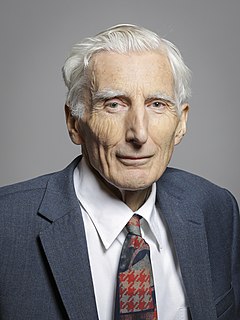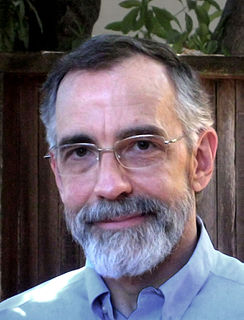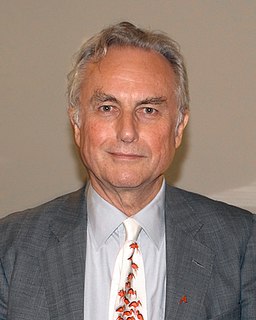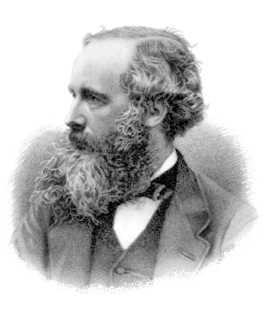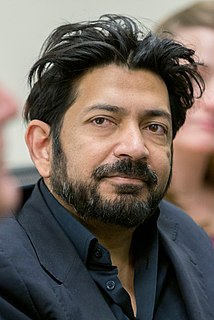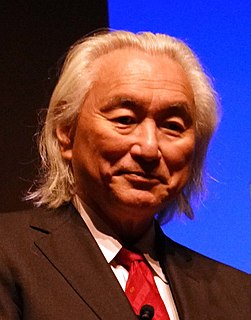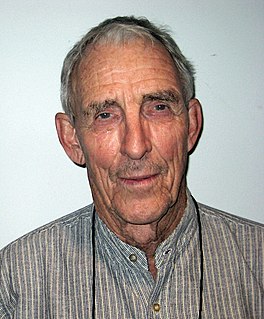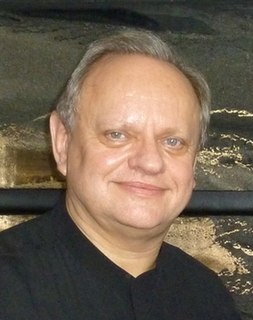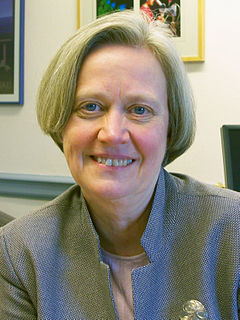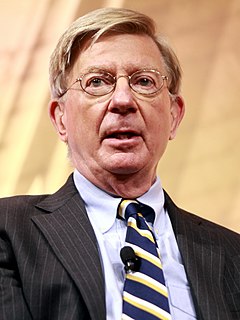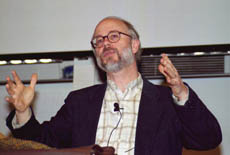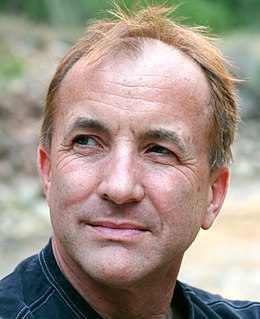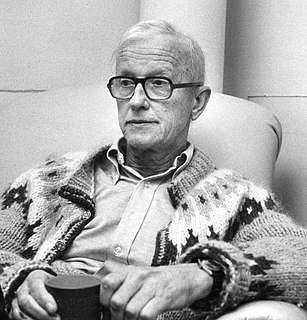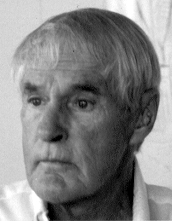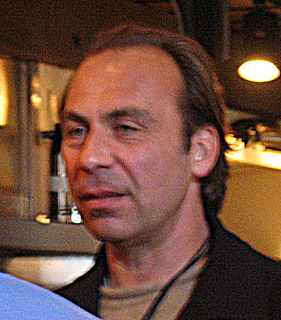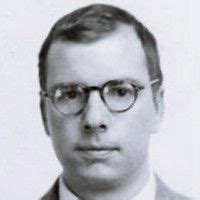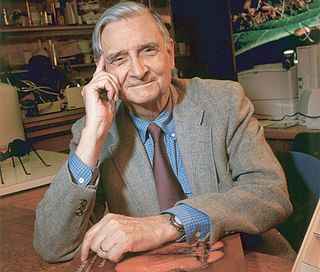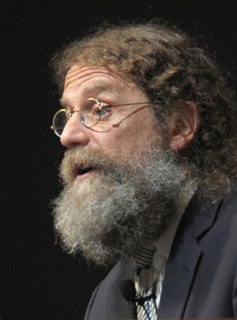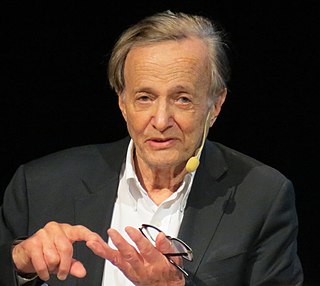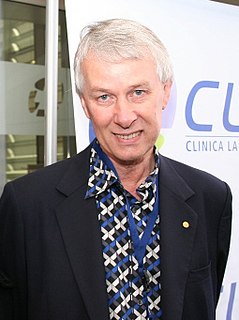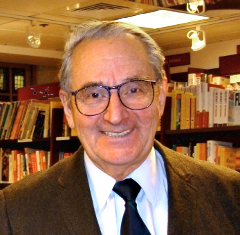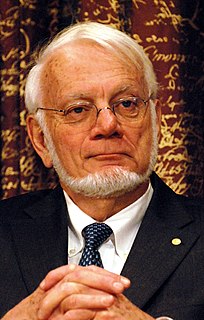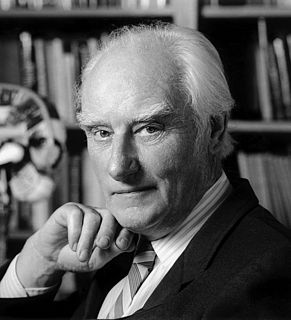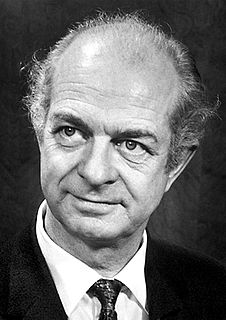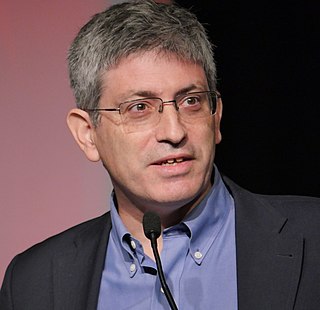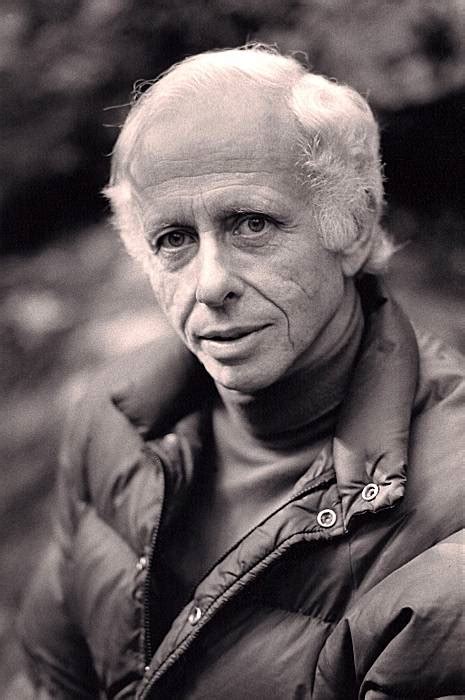Top 212 Molecular Quotes & Sayings - Page 3
Explore popular Molecular quotes.
Last updated on April 19, 2025.
During the 20th century, we came to understand that the essence of all substances - their colour, texture, hardness and so forth - is set by their structure, on scales far smaller even than a microscope can see. Everything on Earth is made of atoms, which are, especially in living things, combined together in intricate molecular assemblages.
We live in the hope and faith that, by the advance of molecular physics, we shall by-and-by be able to see our way as clearly from the constituents of water to the properties of water, as we are now able to deduce the operations of a watch from the form of its parts and the manner in which they are put together.
Reductionist ideology not only hinders biologists from thinking adequately about the phenomena we wish to understand: it has two important social consequences: it serves to relocate social problems to the individual rather than exploring the societal roots and determinants of a phenomenon; and second, it diverts attention and funding from the social to the molecular.
A renaissance in cellular biology has recently revealed the molecular mechanisms by which thoughts and perceptions directly influence gene activity and cell behavior...Energy psychology, through its ability to rapidly identify and reprogram limiting misconceptions, represents the most powerful and effective process to enhance physical and emotional well being.
In your letter you apply the word imponderable to a molecule. Don't do that again. It may also be worth knowing that the aether cannot be molecular. If it were, it would be a gas, and a pint of it would have the same properties as regards heat, etc., as a pint of air, except that it would not be so heavy.
Cheetah genes cooperate with cheetah genes but not with camel genes, and vice versa. This is not because cheetah genes, even in the most poetic sense, see any virtue in the preservation of the cheetah species. They are not working to save the cheetah from extinction like some molecular World Wildlife Fund.
Cancer's life is a recapitulation of the body's life, its existence a pathological mirror of our own. Susan Sontag warned against overburdening an illness with metaphors. But this is not a metaphor. Down to their innate molecular core, cancer cells are hyperactive, survival-endowed, scrappy, fecund, inventive copies of ourselves.
The mystical perception (which is only "mystical" if reality is limited to what can be measured by the intellect and senses) is remarkably consistent in all ages and all places. All phenomena are processes, connections, all is in flux...have the mind screens knocked away to see there is no real edge to anything, that in the endless interpenetration of the universe, a molecular flow, a cosmic energy shimmers in all stone and steel as well as flesh.
My cooking philosophy, what I try to do, is to make a cuisine where the produce and the product shines, compared to some current trends that are maybe more adding additional things, like molecular cuisine, with a lot of additives and chemicals, which are now showing that they could be bad for your health.
The big idea we start with is: "How is the genome interpreted, and how are stable decisions that affect gene expression inherited from one cell to the next?" This is one of the most competitive areas of molecular biology at the moment, and the students are reading papers that in some instances were published this past year. As a consequence, one of the most common answers I have to give to their questions is, "We just don't know."
Most people don't really like to pose. It is difficult to get them to be present and relaxed under this kind of molecular scrutiny. I want them to understand I'm not simply painting them: I am painting them within a precise moment in time, as a shadow moves across their eyebrows. Then it is gone. The moment is over.
When we consider the fact that nearly three-quarters of the surface of the globe is covered by oceanic water, we begin to realise that the molecular scattering of light in liquids may possess an astronomical significance, in fact contribute in an important degree to the observed albedo of the earth.
A paradigm shift is the best a scientist can hope for. Whenever I smell an opportunity like that, I go after it. You have a new discovery that something's working in a different way than you thought. And this is particularly true in molecular and cell biology, which is structural biology and has the least potential for controversy and partisanship among the biological scientists. You're dealing with a concrete object that's either there or not there.
Give us detailed, testable, mechanistic accounts for the origin of life, the origin of the genetic code, the origin of ubiquitous bio macromolecules and assemblages like the ribosome, and the origin of molecular machines like the bacterial flagellum, and intelligent design will die a quick and painless death.
I knew, however, that it would cost ten times what I had available in order to build a molecular beam machine. I decided to follow a byway, rather than the highway. It is a procedure I have subsequently recommended to beginning scientists in this country, where research strategy is best modelled on that used by Wolfe at the Plains of Abraham.
The students of biodiversity, the ones we most need in science today, have an enormous task ahead of molecular biology and the medical scientists. Studying model species is a great idea, but we need to combine that with biodiversity studies and have those properly supported because of the contribution they can make to conservation biology, to agrobiology, to the attainment of a sustainable world.
In physics, one of the most exciting areas is in nanotech. With computers exhausting the power of silicon, Silicon Valley could become a Rust Belt, unless we can find replacements, such as quantum computers and molecular computers. To be a leader in any field, one has to have a great imagination. Sure, we have to know the basics and fundamentals. But beyond that, we have to let our imagination soar.
The idea would be in my mind - and I know it sounds strange - is that the most important advances in medicine would be made not by new knowledge in molecular biology, because that's exceeding what we can even use. It'll be made by mathematicians, physicists, computer scientists, figuring out a way to get all that information together.
I am not a climatologist, but I don't think any of the other witnesses are either. I do work in the related field of atomic, molecular and optical physics. I have spent my professional life studying the interactions of visible and infrared radiation with gases - one of the main physical phenomena behind the greenhouse effect. I have published over 200 papers in peer reviewed scientific journals.
My aging body transmits an ageless life stream. Molecular and atomic replacement change life's composition. Molecules take part in structure and in training, countless trillions of them. After my death, the molecules of my being will return to the earth and sky. They came from the stars. I am of the stars.
I was smart enough to know it would probably make me a salable item for the paparazzi. I knew I'd have to move to a home that had a gate. But that pearl of possibility that lives in your heart when you meet somebody you want to know more about has such a different molecular density than everything else that you have to pursue it.
What have I done? I've blundered my way through life. So I have my picture on the wall. The minute I die, that picture will start to yellow and fade and eventually be gone. Blown in the wind and become part of the molecular structure of something else. These things we see as "success," they're non-accomplishments.
The nucleic acids, as constituents of living organisms, are comparable In importance to proteins. There is evidence that they are Involved In the processes of cell division and growth, that they participate In the transmission of hereditary characters, and that they are important constituents of viruses. An understanding of the molecular structure of the nucleic acids should be of value In the effort to understand the fundamental phenomena of life.
The simplest single-celled organism oscillates to a number of different frequencies, at the atomic, molecular, sub-cellular, and cellular levels. Microscopic movies of these organisms are striking for the ceaseless, rhythmic pulsation that is revealed. In an organism as complex as a human being, the frequencies of oscillation and the interactions between those frequencies are multitudinous.
It is fortunate that molecular synthesis also serves the utilitarian function of producing quantities of rare or novel substances which satisfy human needs, especially with regard to health, and the scientific function of stimulating research and education throughout the whole discipline of chemistry.
Addressing the conclusions of The God Delusion point by point with the devastating insight of a molecular biologist turned theologian, Alister McGrath dismantles the argument that science should lead to atheism, and demonstrates instead that Dawkins has abandoned his much-cherished rationality to embrace an embittered manifesto of dogmatic atheist fundamentalism.



